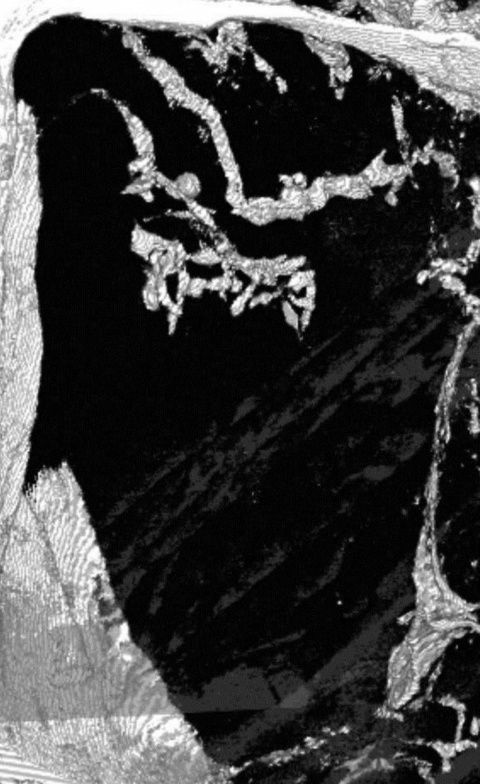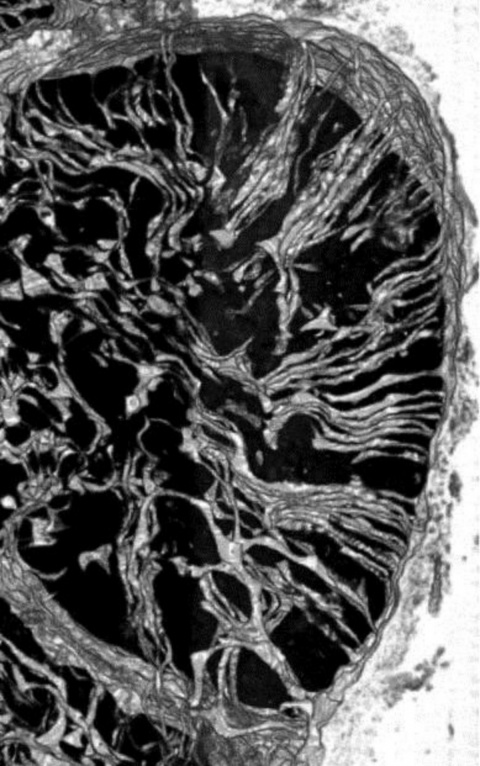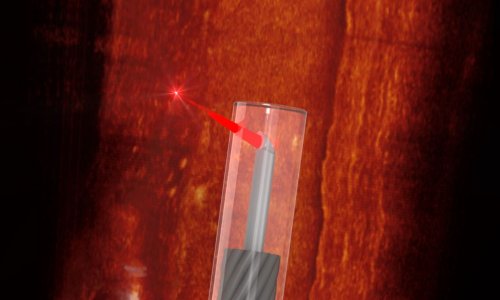Article • Myocardial infarction
Advanced imaging techniques reveal T-tubules
Research conducted by Dr Ashraf Kitmitto and colleagues at the University of Manchester provides new information as to why some cells do not work properly following a heart attack.
Report: Mark Nicholls

Their findings – illustrated with striking 3D nano-images – were presented at the British Cardiovascular Society (BCS) Conference in Manchester in June in the session ‘Unravelling the structural basis of cardiovascular disease through the application of advanced imaging techniques’.
Images revealing the ‘bicycle spoke’ structure of a heart cell may hold key clues to reducing damage from a heart attack. Using serial block face scanning electron microscopy (SBF-SEM), Kitmitto and her team produced the 3D images of a healthy heart cell at nanoscopic scale, which shows that part of their structure is arranged like spokes on a wheel.
During her talk, ‘3D views of myocyte remodelling in heart failure and MI’, Ashraf Kitmitto discussed how the spoke-like structures, called T-tubules, carry an electrical signal from the outside the cell to the inside and are necessary for the coordinated transmission of the electrical impulse through the cell, enabling cardiac cells to contract and thus the heart to pump blood around the body.

However, following myocardial infarction, the T-tubules are lost in many areas and the electrical signal cannot be carried properly through the cells. The cardiac myocyte death triggers a healing response or remodelling with extracellular matrix, fibrous tissue deposition within the surviving myocardium. The remaining T-tubules appear to fuse and clump together forming very large, but distorted, ‘super-tubules’.
Funded by the British Heart Foundation (BHF), the research has offered what Kitmitto described as ‘the most detailed images of the T-tubule network to date’ – promising new insights into the structural changes that may contribute towards the development of heart failure and dangerous irregular heartbeats.The next step is to find out why this process happens following a heart attack and develop strategies to intervene to stop it from happening, for improved outcomes.

With an estimated 550,000 people in the UK living with heart failure following a heart attack, Kitmitto said: ‘We’ve made major advances in treating people following a heart attack, so more people are surviving, but the treatments don’t address changes to the structure of the heart.‘ For the first time, we’ve been able to look, in 3D, at the nano-architecture of the cells around the damaged area of the heart and see the changes following a heart attack.
‘The regular pattern of T-tubules – like spokes on a wheel – is really important because it means the whole heart cell can receive the same information and it can contract together. But, following a heart attack that regular structure is lost, so some parts of the cell will get the signal and other parts won’t. ‘Now, we can see what’s going on; the next step is to find out why and how we can intervene to prevent heart failure development.’ BHF Associate Medical Director Dr Mike Knapton said: ‘This interesting research and the beautiful images may hold key clues to reducing the permanent damage caused by a heart attack.’

Other talks in the session included clinical imaging for vulnerable plaques: VH-IVUS, CT and OCT by Professor Martin Bennett; Materials Science in Cardiovascular Research: a new perspective (Dr Sergio Bertazzo); and how SICM microscopy/FRET reveals molecular and cellular basis of heart failure (Professor Julia Gorelik).
Profile:
Dr Ashraf Kitmitto is a Reader in the Institute of Cardiovascular Sciences, University of Manchester. Having established her own research group she worked on structural studies of proteins mediating excitation-contraction coupling, leading to the determination of the first 3D structure for the L-type voltage-gated calcium channel. This research has now developed to encompass the morphological changes that occur to the cellular structure of the heart as cardiac failure develops, using state-of-the art 3D electron microscopy imaging methods.
28.08.2015











